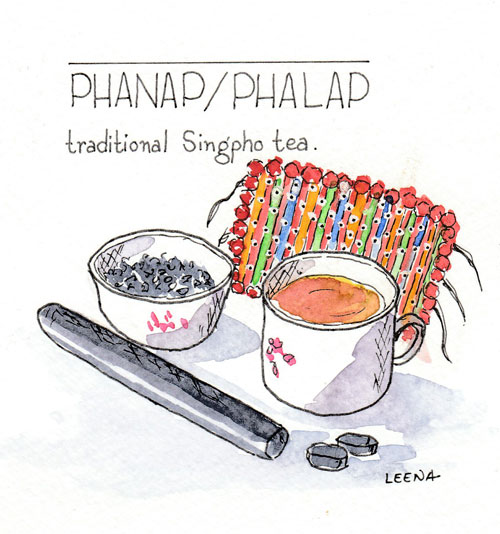A popular folklore among the Singpho tribe talks of two brothers out hunting in the forest and chewing on some wild leaves when they got tired and hungry. To their surprise, the few leaves they chewed on, not only removed their hunger but also rejuvenated them. They had discovered tea leaves, that went on to become an integral part of the Singpho culture. Phalap or Singpho tea is the traditional tea of the Singphos. It is also known by various other names like coin tea, bamboo tea and smoked tea because of the unique way in which it is processed.
The leaves are sun-dried and then stuffed in bamboo hollows and smoked over fire for weeks, the leaves hardening to take the shape of the bamboo tube. This processed tea can then be preserved for years, small portions cut from the tube (resembling coins) and brewed to a lovely golden orange beverage.

The Singphos are believed to be among first tea drinkers of India
The Singphos are believed to be among first tea drinkers of India and have been using it for centuries chiefly for its medicinal values. In 1823 when Major Robert Bruce learnt about this unique tea culture. He met with Bissa Gam, the chief of the tribe and obtained seeds of the plant for further examination. In the early 1830’s this variety was officially classified as Camellia sinensis var Assamica, a variant of the Chinese tea. In February 1839, the Assam Tea Company, the first joint stock tea company, was established in London. Thereby opening the doors of Assam to a great industry.









1 Comment